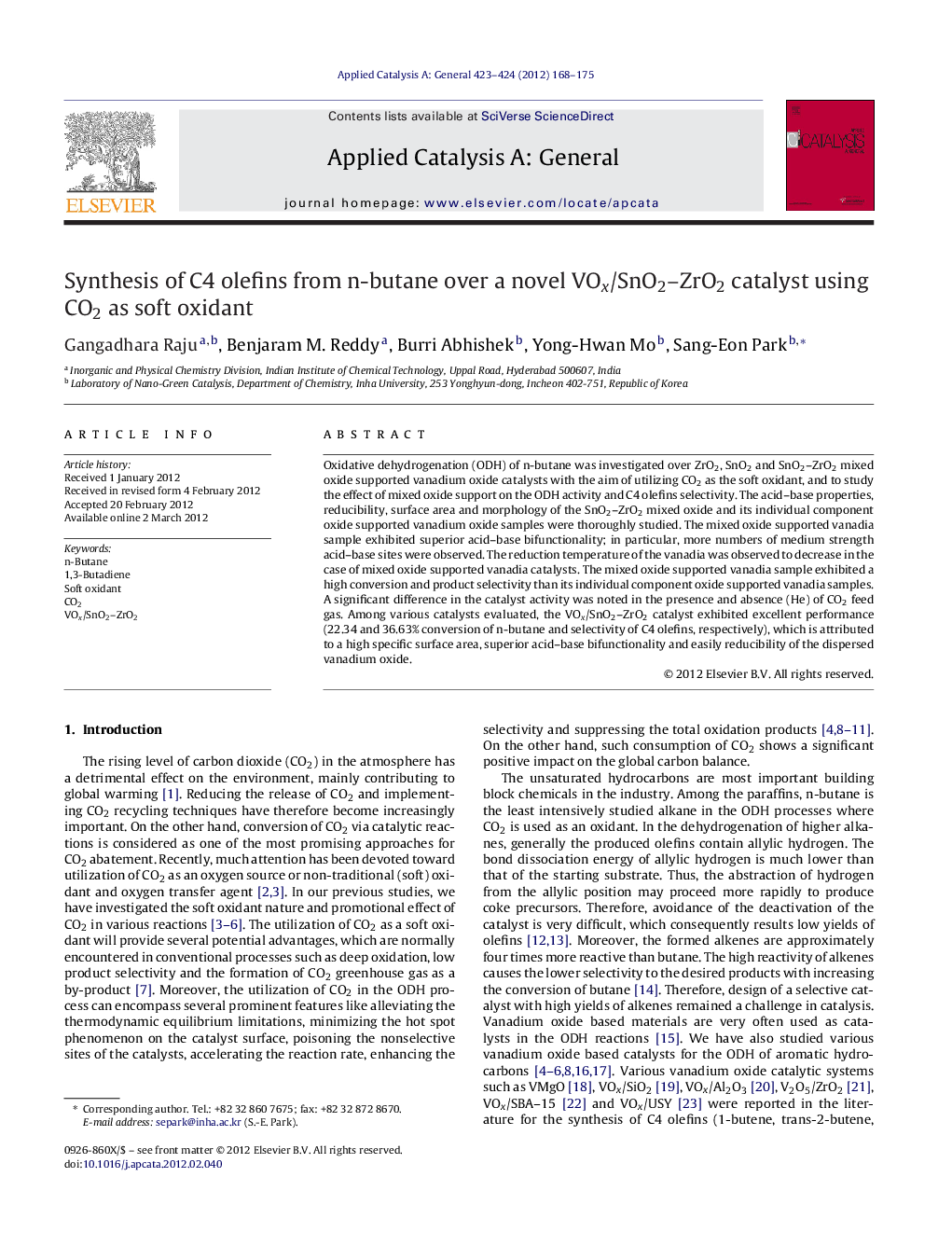| Article ID | Journal | Published Year | Pages | File Type |
|---|---|---|---|---|
| 41013 | Applied Catalysis A: General | 2012 | 8 Pages |
Oxidative dehydrogenation (ODH) of n-butane was investigated over ZrO2, SnO2 and SnO2–ZrO2 mixed oxide supported vanadium oxide catalysts with the aim of utilizing CO2 as the soft oxidant, and to study the effect of mixed oxide support on the ODH activity and C4 olefins selectivity. The acid–base properties, reducibility, surface area and morphology of the SnO2–ZrO2 mixed oxide and its individual component oxide supported vanadium oxide samples were thoroughly studied. The mixed oxide supported vanadia sample exhibited superior acid–base bifunctionality; in particular, more numbers of medium strength acid–base sites were observed. The reduction temperature of the vanadia was observed to decrease in the case of mixed oxide supported vanadia catalysts. The mixed oxide supported vanadia sample exhibited a high conversion and product selectivity than its individual component oxide supported vanadia samples. A significant difference in the catalyst activity was noted in the presence and absence (He) of CO2 feed gas. Among various catalysts evaluated, the VOx/SnO2–ZrO2 catalyst exhibited excellent performance (22.34 and 36.63% conversion of n-butane and selectivity of C4 olefins, respectively), which is attributed to a high specific surface area, superior acid–base bifunctionality and easily reducibility of the dispersed vanadium oxide.
Graphical abstractFigure optionsDownload full-size imageDownload high-quality image (220 K)Download as PowerPoint slideHighlights► CO2 has been utilized as a soft oxidant in oxidative dehydrogenation of n-butane. ► VOx/SnO2–ZrO2 mixed oxide exhibited a high conversion and product selectivity. ► Mixed oxide is more active than single oxide catalysts due to synergetic effects. ► CO2 exhibited a significant promoting effect on conversion and product selectivity.
